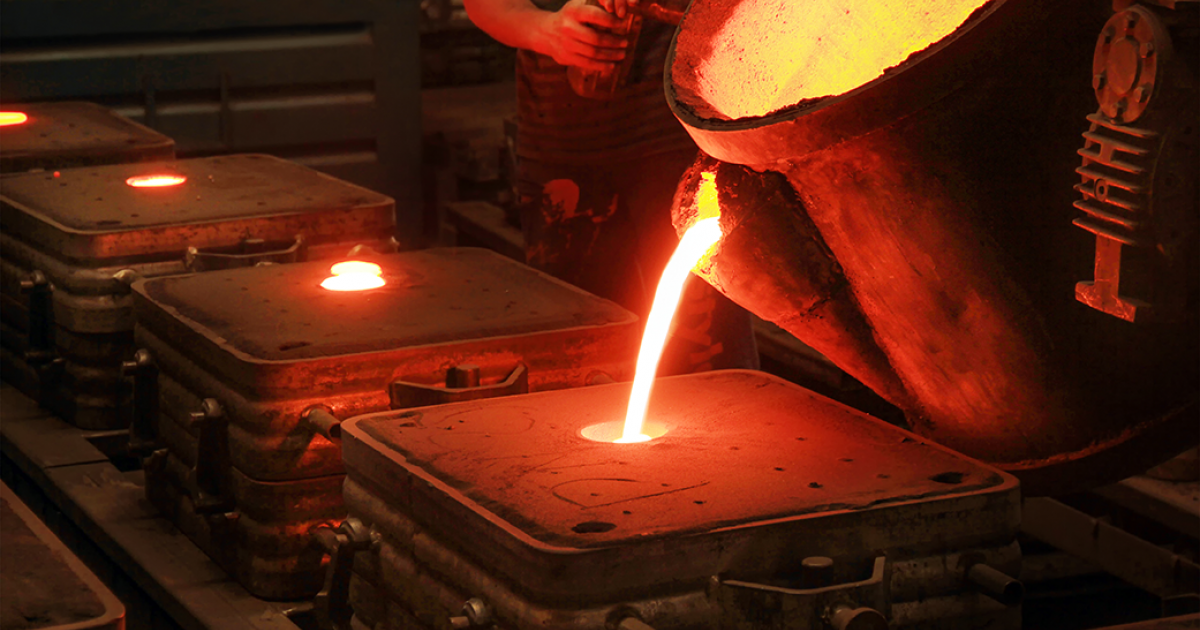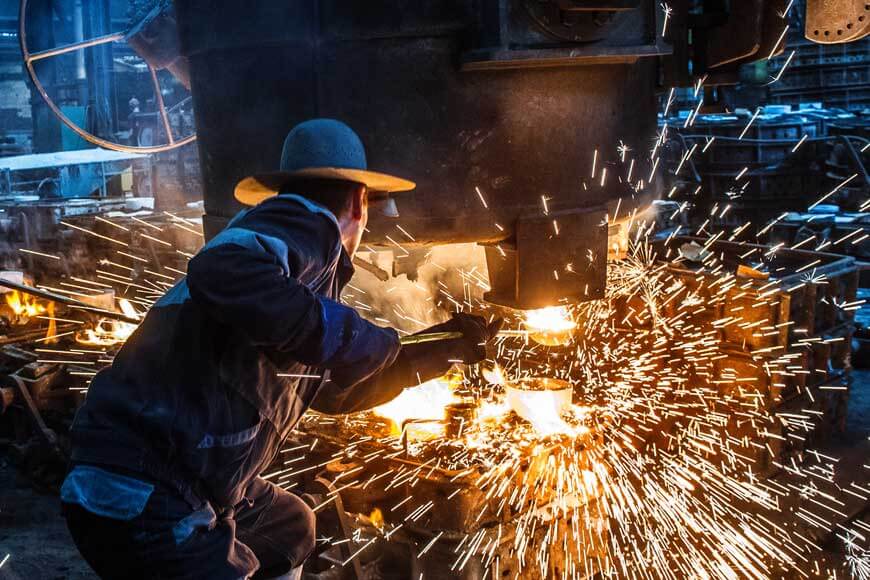Explore How Aluminum Foundry Experts Create Precision Components for Design
Wiki Article
Checking out the Art of Metal Casting: Techniques and Applications in Modern Foundries
Metal casting is a time-honored craft that combines virtuosity with engineering accuracy. From ancient strategies to modern-day advancements, this procedure has evolved significantly. Various approaches, such as sand casting and lost-wax casting, showcase the flexibility of the medium. Developments like 3D printing are improving just how foundries operate. As the lines between capability and creativity blur, one must think about how these advancements impact both contemporary applications and typical techniques. What lies in advance in this advancing landscape?The Fundamentals of Metal Casting
Metal casting, a crucial process in manufacturing, entails pouring liquified steel right into a mold and mildew to accomplish a wanted shape. This method offers as a foundation in the manufacturing of complex metal parts throughout different markets. Secret aspects of steel casting include the option of materials, which can range from light weight aluminum to steel, each picked for its particular properties and application suitability. The procedure begins with mold and mildew production, which can be made from sand, metal, or porcelains, depending on the casting technique used. The liquified steel is after that meticulously put right into the mold, where it cools down and solidifies. Critical elements such as temperature level control, cooling rate, and mold design greatly influence the end product's quality and characteristics. On top of that, recognizing the chemical and physical residential properties of the steel help in optimizing casting efficiency, eventually enhancing the efficiency of the production procedure and ensuring premium outcome tailored to certain demands.Standard Casting Methods
Standard casting strategies incorporate a range of approaches that have actually stood the test of time, demonstrating their performance in generating complex metal components. One noticeable technique is sand casting, which uses a blend of sand and a bonding agent to develop mold and mildews. The versatility of sand casting enables the production of varied forms, making it appropriate for both small-scale and massive production. An additional notable method is investment casting, commonly utilized for complicated and precise geometries. This technique entails producing a wax pattern that is coated in a ceramic shell, which is after that heated to eliminate the wax, leaving a dental caries for liquified metal. Additionally, die casting is made use of for high-volume manufacturing, where liquified steel is injected right into reusable steel mold and mildews. Each of these conventional methods continues to be relevant, showcasing the craftsmanship and skill integral in the art of steel casting, while satisfying the demands of numerous sectors.Modern Innovations in Metal Casting
As industries progress, developments in steel casting are reshaping manufacturing processes and boosting effectiveness. Advanced innovations such as 3D printing and computer-aided design (CAD) are reinventing mold and mildew production, enabling detailed layouts that were previously unattainable. These approaches promote rapid prototyping, lowering preparations and promoting creative thinking in item growth.Furthermore, the integration of automation and robotics in factories is streamlining procedures, minimizing human error, and raising safety and security. Smart sensors and real-time monitoring systems enable precise control of temperature and material buildings, making sure better results.
Sustainable methods are arising, with the usage of recycled materials and energy-efficient heaters, reducing ecological influence. The fostering of composite products and innovative alloys is additionally expanding the possibilities of steel casting, causing stronger and lighter elements. In general, these contemporary innovations are changing steel casting into an extra reliable, precise, and environmentally accountable industry.
Applications Throughout Numerous Industries

While varied sectors significantly depend on metal casting, the strategy's adaptability plays an important function in conference specific application demands. In the automobile industry, metal more info casting is essential for generating engine parts, transmission real estates, and other intricate parts that call for precision and durability. The aerospace market gain from light-weight casted components, guaranteeing both performance and fuel effectiveness. In addition, the building and construction market utilizes steel casting for architectural elements, such as beam of lights and supports, improving the honesty of structures and bridges.
The energy field utilizes metal casting for turbine blades and various other considerable machinery that have to withstand severe problems. Medical gadgets additionally see applications of steel casting, particularly in medical tools and prosthetics, where precision is vital - Aluminum Foundry. Generally, the convenience and reliability of steel casting make it indispensable throughout different areas, contributing to the advancement of technology and infrastructure in modern culture
The Artistic Side of Metal Casting
Commonly connected with commercial applications, metal casting likewise finds its place in the domain of art, where competent artisans change liquified metal right into complex designs and expressive sculptures. This imaginative side of steel casting incorporates diverse methods, consisting of sand casting, lost-wax casting, and investment casting, each offering unique possibilities for creativity. Artists utilize these approaches to produce jobs that range from abstract types to realistic representations, permitting personal expression and discourse on modern concerns.
Often Asked Inquiries
What Precaution Are Crucial in a Metal Casting Shop?
Necessary security steps in a metal casting shop include personal safety tools, appropriate ventilation, emergency situation procedures, training in taking care of molten metals, normal devices maintenance, and clear communication of risks to ensure employee safety and security and wellness. Aluminum Casting.Exactly How Do Environmental Rules Impact Metal Casting Processes?
Environmental policies significantly influence steel casting procedures by mandating using cleaner innovations, lowering discharges, and promoting waste monitoring practices. Compliance commonly needs financial investments in devices, training, and modifications to existing treatments to decrease ecological influence.What Are the Typical Problems in Metal Castings?
Typical problems in steel castings consist of porosity, shrinkage, additions, and misruns. These problems can develop from incorrect mold and mildew design, insufficient temperature level control, or contamination, inevitably affecting the structural integrity and general high quality of the end product.Exactly How Is Waste Managed During Metal Casting Production?
Waste management in steel casting production includes reusing scrap steel, carrying out efficient product usage, and utilizing sophisticated technologies to reduce waste. Shops adopt methods like sand reclamation and appropriate disposal methods to reduce environmental influence.What Career Opportunities Exist in the Metal Casting Sector?
The steel casting sector supplies varied occupation possibilities, consisting of duties such as foundry supervisor, metallurgical designer, top quality control examiner, pattern manufacturer, and manufacturing manager, dealing with different capability and proficiency in manufacturing procedures.Metal casting, a critical process in production, includes putting molten steel into a mold and mildew to achieve a preferred shape. Furthermore, pass away casting is utilized for high-volume manufacturing, where molten steel is injected into reusable metal molds. While diverse markets significantly depend on metal casting, the technique's versatility plays an important function in conference details application requirements. Commonly connected with industrial applications, steel casting additionally finds its location in the domain name of art, where competent craftsmens change liquified metal into expressive sculptures and detailed designs. Waste monitoring in steel casting production includes recycling scrap metal, carrying out efficient material usage, and utilizing innovative innovations to reduce waste.
Report this wiki page